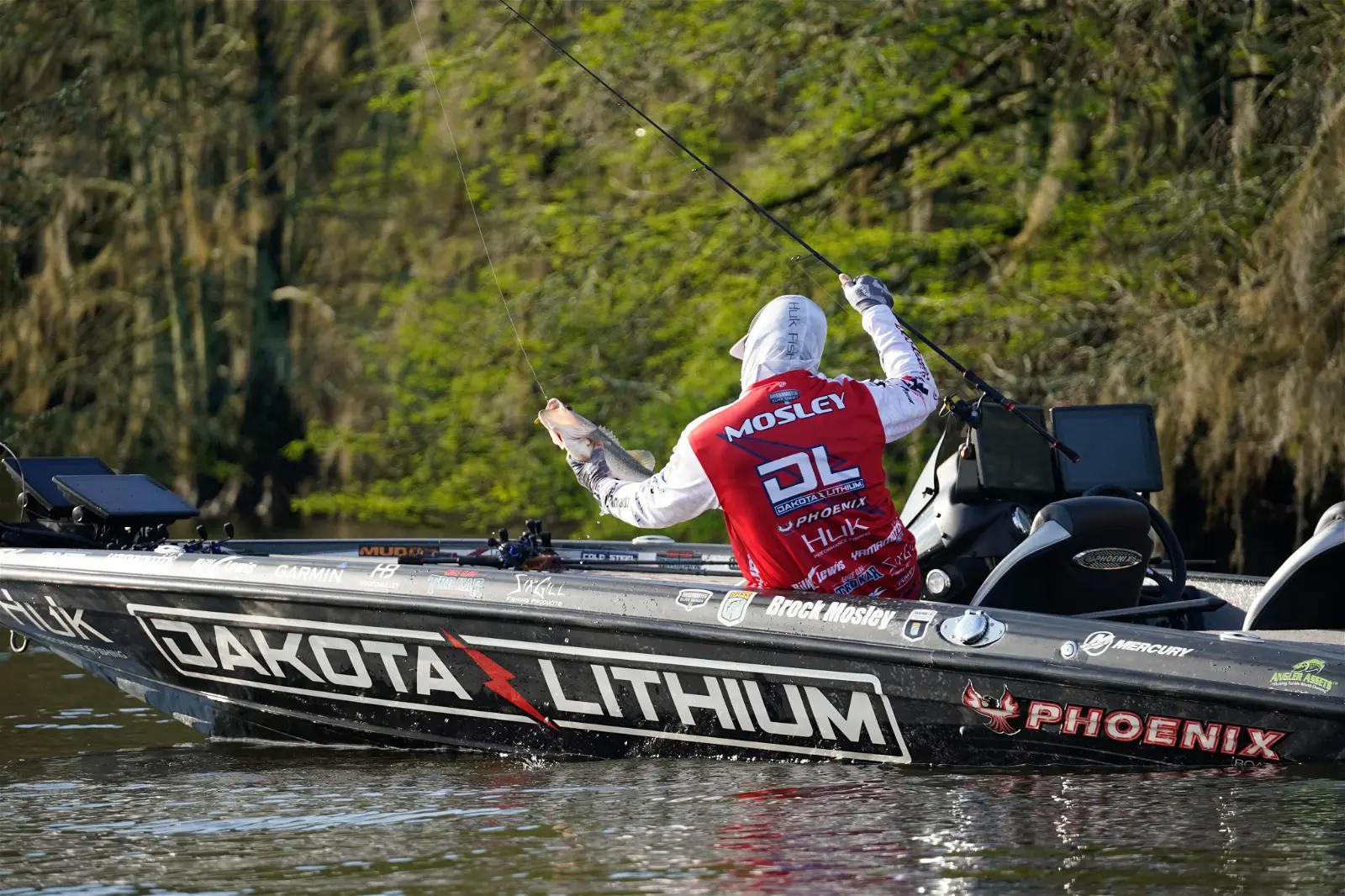


Bassmaster Brock Mosely runs 3 x 12V 135Ah Dakota Lithium batteries for his trolling motor
3 minute reading time
When you are fishing with a trolling motor your power setting is determined by the conditions, and your application. Trolling in high flow river current will require a higher power setting then trolling near a lake inlet.
Here’s what we have learned from our Team Dakota Lithium pro staff: in most applications a professional fisherman averages a 30% of max power setting. So if you buy a Dakota Lithium battery that meets you max amp draw needs (Ah capacity rating of battery is greater then the max amp draw of your motor) than you most likely have a battery that will last you a long day on the water. For example, one pro staff tested a 24v 54ah battery package for their 24v 80 lb thrust trolling motor during tournament fishing conditions (lake fishing, low wind) and got a 14 hour run time.
For an example of amp draw per power setting check out below for specifications for the Garmin Force Trolling Motor amp draw. Garmin details how many amps are used at each power setting. The Force trolling motor can run on 24 volts or 36 volts, and the chart below shows how a 24v setting will draw higher amps then running at 36 volts. And how a setting of 30% draws 10% of the amount of power used at 90%. It is the efficiency sweet spot for power use.
|
Throttle Level |
Thrust |
Current |
|---|---|---|
|
10% |
25 N-m (6 lbf) |
2 A |
|
20% |
45 N-m (10 lbf) |
3 A |
|
30% |
70 N-m (16 lbf) |
6 A |
|
40% |
101 N-m (23 lbf) |
9 A |
|
50% |
140 N-m (31 lbf) |
14 A |
|
60% |
184 N-m (41 lbf) |
21 A |
|
70% |
233 N-m (52 lbf) |
29 A |
|
80% |
287 N-m (65 lbf) |
40 A |
|
90% |
345 N-m (78 lbf) |
54 A |
|
100% |
355 N-m (80 lbf) |
57 A |
|
Throttle Level |
Thrust |
Current |
|---|---|---|
|
10% |
21 N-m (5 lbf) |
1 A |
|
20% |
41 N-m (9 lbf) |
2 A |
|
30% |
69 N-m (16 lbf) |
4 A |
|
40% |
103 N-m (23 lbf) |
6 A |
|
50% |
144 N-m (32 lbf) |
10 A |
|
60% |
191 N-m (43 lbf) |
15 A |
|
70% |
246 N-m (55 lbf) |
21 A |
|
80% |
307 N-m (69 lbf) |
29 A |
|
90% |
375N-m (84 lbf) |
39 A |
|
100% |
445 N-m (100 lbf) |
54 A |
Please note: this chart is for educational purposes only and is not applicable to all trolling motors (this chart came from Garmin). Contact your trolling motor manufacturer for your model’s amp draw and instructions on rigging, including the use of fuses or circuit breakers.
